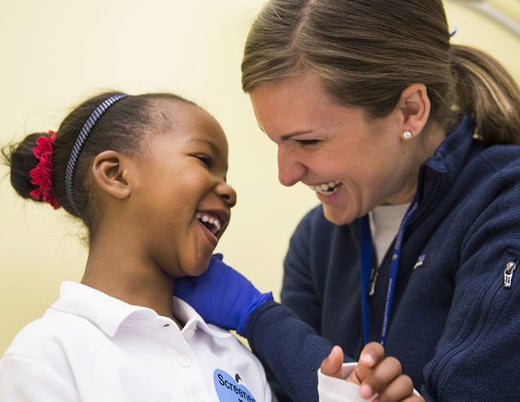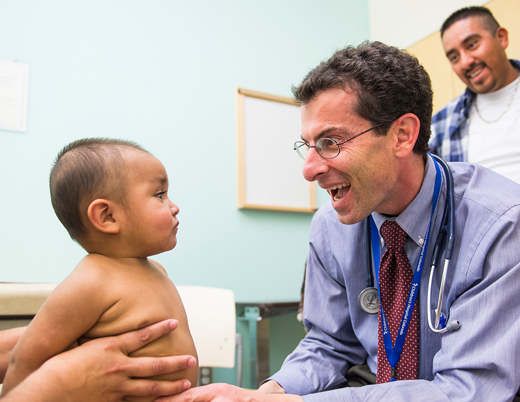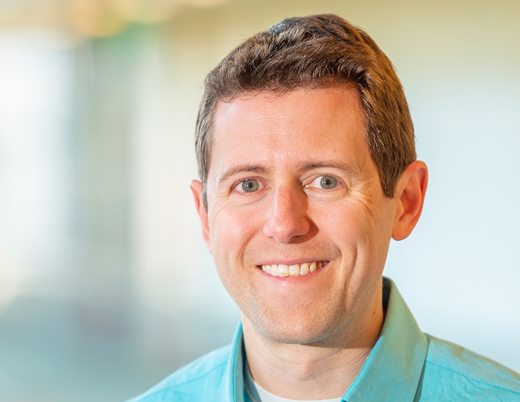Could a rare disease linked to viral infection in 2018 help prepare the world for the next global pandemic?
In autumn 2014, a sudden spike of acute flaccid myelitis, or AFM, paralyzed about 120 children across the U.S. Cases spiked again in 2016. Pediatric infectious diseases specialist Kevin Messacar, MD, and his team were the first to connect the bi-yearly pattern of flareups to a specific culprit: the enterovirus EV-D68. Then the outbreaks stopped. Now, Dr. Messacar’s work with EV-D68 is serving as the foundation of a pilot project, long in the works at the National Institutes of Health, to prepare for the next global pandemic.
New approach to pandemic prepping
In June 2020, as U.S. COVID-19 cases were reaching 2 million, a group of investigators at the National Institute for Allergy and Infectious Diseases (NIAID) published a paper arguing for a new approach to preparing for the next pandemic. The researchers, led by NIAID Human Immunology Section Chief Daniel Douek, MD, PhD, proposed that the global medical community was already doing a good job identifying emerging pathogens. What they really needed to know was how the human immune system would respond to them.
To make a vaccine, for example, the first thing you need to know is how the body naturally neutralizes the virus. On SARS-CoV-2, antibodies bind to the now well-known spike protein the virus uses to bind to its host. It was eventually that feature of the virus that NIAID researchers chose as a target in helping develop the Moderna vaccine.
What if scientists could use this same approach to target an emerging pathogen before it emerged? To do this, they would need to study the actual T and B cells from exposed humans, and they’d need live ones.
“Unlike surveillance for a particular pathogen, immunologic surveillance allows us to look at the human response to whatever viruses emerge,” says Dr. Messacar. “We’re looking at the host.”
Clinical study with live blood cells
Although AFM is a rare complication of EV-D68 infection, actual infection with EV-D68 is most likely not rare at all. Epidemiologically speaking, the biennial outbreak pattern (2014, 2016, 2018) suggests the body’s immune response to EV-D68 is durable, and that the outbreaks have been widespread enough to deplete the susceptible pool: Humanity needs a gap year to generate enough nonimmune hosts to support another outbreak.
But the anticipated spike in 2020 never happened. Epidemiologists suspect that was due to pandemic-related public health push for masking and social distancing. Going into EV season 2022, those measures are largely lifted.
That makes EV-D68 an ideal candidate for the NIAID’s pilot study of the Pandemic Response Repository through Microbial and Immunological Surveillance and Epidemiology, better known as PREMISE.
“The study is designed to follow healthy kids under 10 years old before, during and after EV season to see what they’ve been exposed to and how their body reacted,” Dr. Messacar says.
The tricky part is getting samples of live peripheral blood mononuclear cells, or PBMCs, to NIAID’s Vaccine Research Center in Maryland, which requires specialized processing, storage and shipment in liquid nitrogen. It’s a logistical challenge for participating clinical sites, which include the University of North Carolina, Cornell University and the University of Colorado.
“At Cornell’s site in Queens they’re only recruiting in the morning,” Dr. Messacar says. “They do the blood draw in the clinic and courier the sample across the city to be processed in Cornell’s research lab in Manhattan in the afternoon.”
On the Anschutz Medical Campus, that lab was already set up by Adriana Weinberg, MD, an infectious disease researcher who studies, among other things, parent-to-child transmission of HIV. Those studies also require live PBMCs, and since there’s no way to know when a baby will be born, the lab has the ability to process samples 24/7.
Dr. Douek and team called Dr. Messacar because of his work with EV-D68. But the lab was a big draw.
“They were blown away by the setup, how buttoned up the protocols were, how much experience this lab has with this specialized processing,” says Dr. Messacar. “When we told them we could process even at night, they were really impressed.”
Overcoming research challenges
The clinical work of PREMISE will require more than quick lab turnarounds. It requires nurses who can draw blood from young children within strict research protocols. It requires regulatory specialists, grant contracting specialists, logistical specialists.
“It’s impossible to run a trial across centers without a well-coordinated team,” Dr. Messacar says. “This just isn’t possible in a lot of places. I feel very fortunate."
As study principal investigator, Dr. Messacar and his team at Children’s Hospital Colorado and the University of Colorado School of Medicine are ultimately responsible for coordinating the EV-D68 clinic research end of PREMISE, supported by $1.98 million in National Institutes of Health funding, with $5 million scoped over three years.
The challenges will be significant — starting with recruitment. Investigators are looking to recruit a demographically representative population that reflects the catchment area. But it’s not an easy sell. Participation requires two blood draws, one at the beginning and one at the end — something no one particularly enjoys.
“When doing research on a specific condition, you go to the bedside of a child who’s affected and ask if they want to participate in a study. They’re often willing because it’s focused on the disease the child has,” Dr. Messacar says. “Here we’re asking families to contribute to the greater good of helping society prepare for the next pandemic.
“The response,” he adds, “has been overwhelmingly positive.”
Ordinary kids, exposed to ordinary things
It’s not currently known at what age children are first exposed to EV-D68 or how long babies keep antibodies from their mother. There’s no treatment for AFM. Dr. Messacar expects the study to yield critical information that might one day lead to a treatment or even a vaccine, although AFM is rare.
The study’s eventual aims are much broader.
“From these specialized samples, they can tell anything this child has been exposed to for their entire life prior to that first visit,” he says, “and then what they’ve been exposed to in the interim. This pilot is focused on EV-D68, but these samples can be used for whatever pathogen emerges next.
“We’re building an immunologic biorepository of ordinary kids exposed to ordinary things,” he continues. “These samples are all aliquoted and tracked and connected to clinical data. After this pilot, we have the ability to open that up to the wider research community.”
They’ll be expanding the catchment area, too. The pilot study is preparing to add a fourth site, the University of Alabama, this year. Eventually, PREMISE’s goal is to stand up sentinel immunological surveillance sites all over the world.
And while, because of its rarity, the chances of vaccine development for AFM are currently low — well, you never know.
“If you look at patterns prior to the 1950s, you see similar cyclical outbreaks of polio,” says Dr. Messacar. “Then it exploded with tens of thousands of cases of paralysis. Right now, you’ve probably got four years of susceptible kids. That’s a lot of kindling.
“I’ve read through the dusty polio books,” he adds. “You can’t predict what’s going to happen. That’s what polio taught us back then, and that’s what COVID continues to teach us now. But we can prepare. We can prepare and learn as much as we can.”
Featured Researchers

Kevin Messacar, MD, PhD
Pediatric infectious disease specialist
Pediatric Infectious Disease Program
Children's Hospital Colorado
Associate professor
Pediatrics-Infectious Diseases
University of Colorado School of Medicine





 720-777-0123
720-777-0123










